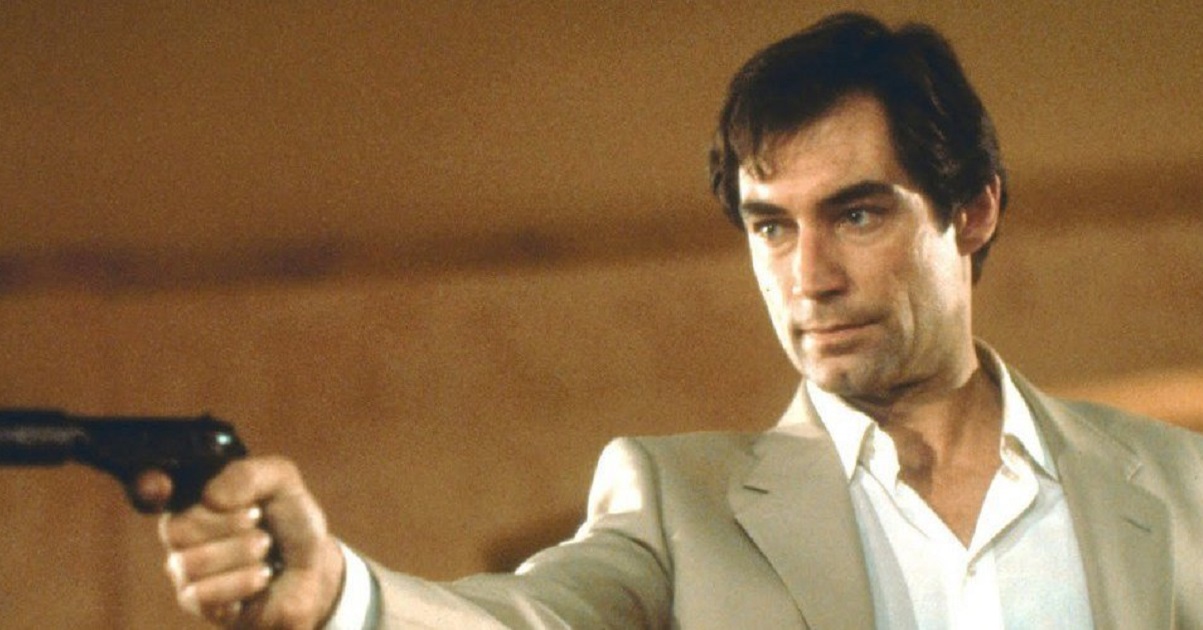Bond fans are always debating which 007 actor did it best. A 2019 poll of British James Bond fans named Sean Connery the nation’s favourite Bond, but a 2020 Twitter poll saw Daniel Craig come out on top. Fine actors and fine 007s, no question, but we’d like to suggest that the best Bond is in fact one who tends to be the most overlooked: Dalton, Timothy Dalton. In our eyes he’s come the closest to getting James Bond just right, and here’s why…
20. He waited until he was just old enough to play the part
Reports vary as to when Timothy Dalton was first offered the role of James Bond by Eon Productions, with some claiming it was as early as 1968, before George Lazenby was cast as the second 007 for On Her Majesty’s Secret Service.
[rtk_adunit_top]
By Dalton’s own account, however, it was around the time of Sean Connery’s final (official) Bond film, 1971’s Diamonds Are Forever, at which point Dalton’s own biggest film role had been Heathcliff in 1970’s Wuthering Heights.

As such, if Dalton had accepted Eon’s offer that time, he would have taken over as Bond for 1973’s Live and Let Die, instead of Roger Moore.
[rtk_adunit_middle]
However, while flattered by the offer, Dalton declined as he was then still in his mid-20s.
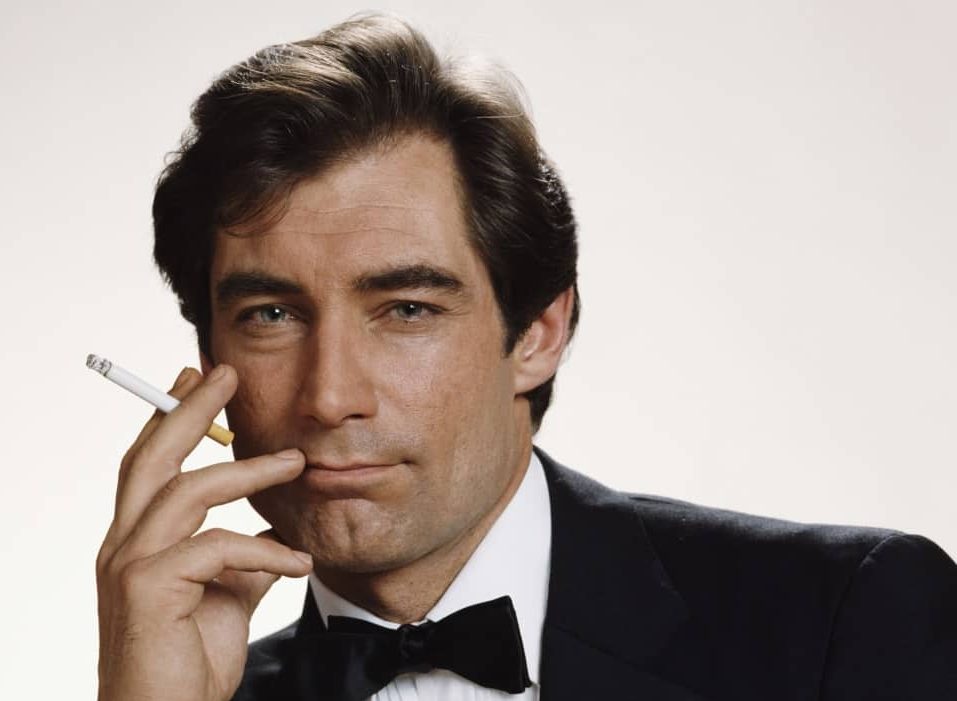
As such, the actor considered himself too young for the part, and many would agree that he was surely correct.
[rtk_adunit_bottom]
Dalton would be 40 when he was ultimately cast in 1986, for the following year’s 15th Bond movie, The Living Daylights, making him – in his own eyes, at the least – more age-appropriate.
19. He refused to play Bond like a Roger Moore-style cartoon
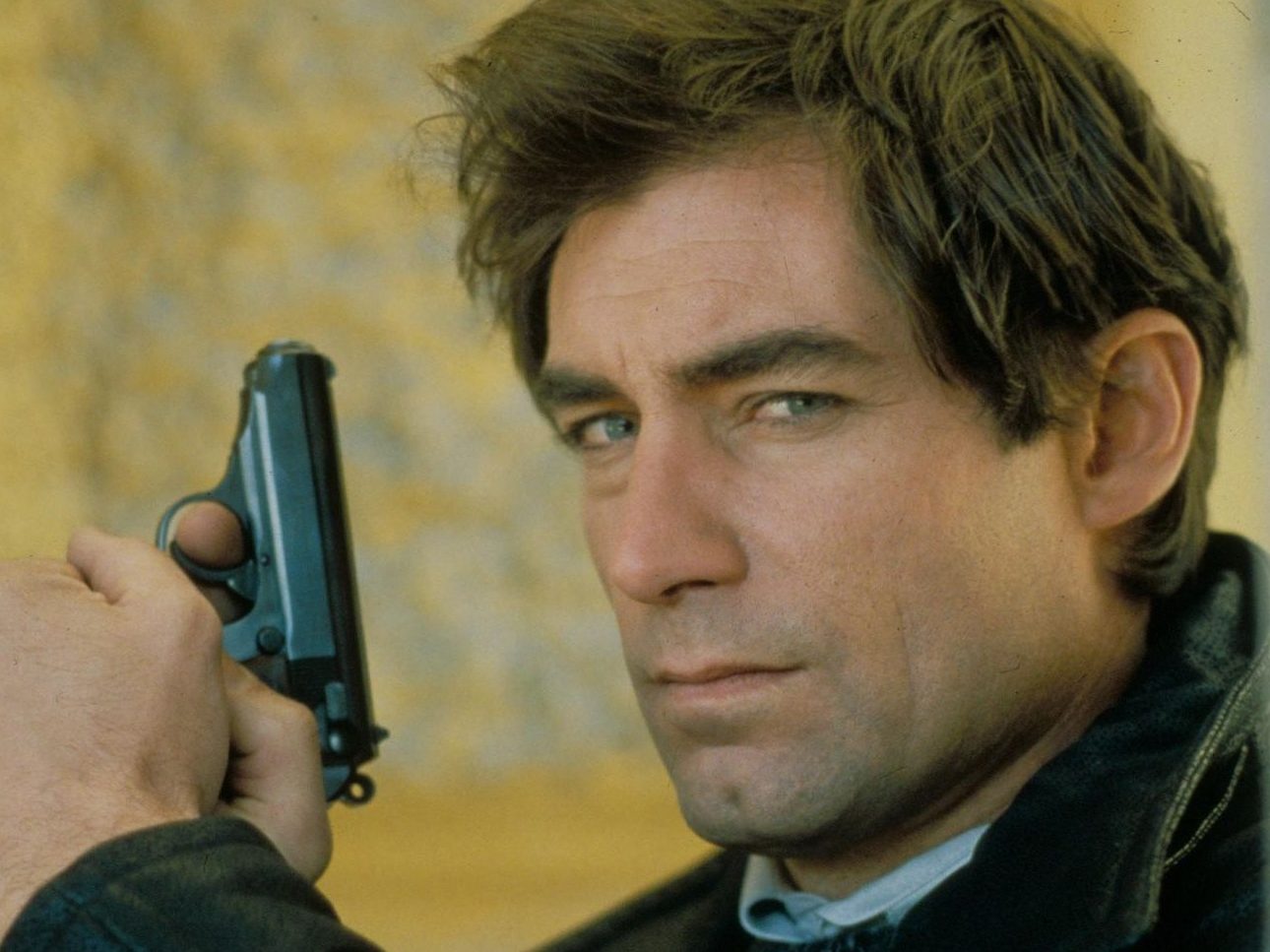
Following Live and Let Die, Eon Productions reportedly again approached Dalton for Bond a number of times in the late 70s and early 80s, by which time Roger Moore’s tenure in the role was coming into question.
[rtk_adunit_top]
By this time, Bond had taken a turn for the cartoonish in such entries as Moonraker and Octopussy.

Moore’s tongue-in-cheek interpretation of Bond had been a deliberate reaction against Sean Connery’s more deadpan take, so it was clear that the new 007 had to again take a different approach.
[rtk_adunit_middle]
Dalton made it clear right away that he would not play Bond in the Moore-era style, feeling that “the films had become too much techno-pop and had lost track of their sense of story.”
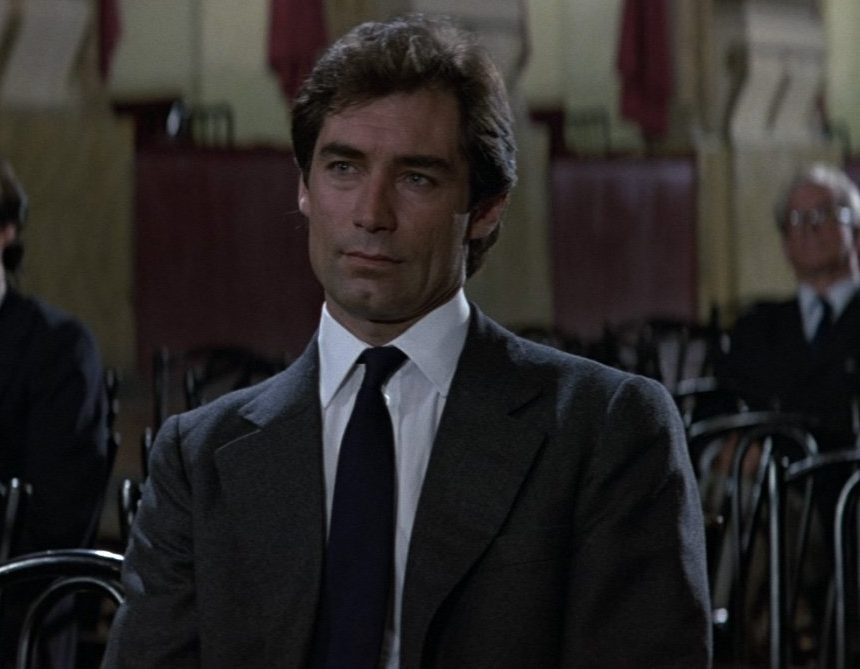
The actor explained, “If you want to believe in the fantasy on screen, then you have to believe in the characters and use them as a stepping-stone to lead you into this fantasy world.
[rtk_adunit_bottom]
Dalton said, “That’s a demand I made, and (producer) Albert Broccoli agreed with me.”
18. He played the character the way Ian Fleming intended

The only way to move on from Moore’s Bond, Dalton believed, was to go back to the source material: the Bond novels by Ian Fleming.
[rtk_adunit_top]
On being offered the role in ’86, Dalton studied Fleming’s work extensively, explaining at the time, “I’d read a couple of the books years ago, and I thought I’d find them trivial now, but I thoroughly enjoyed every one.”
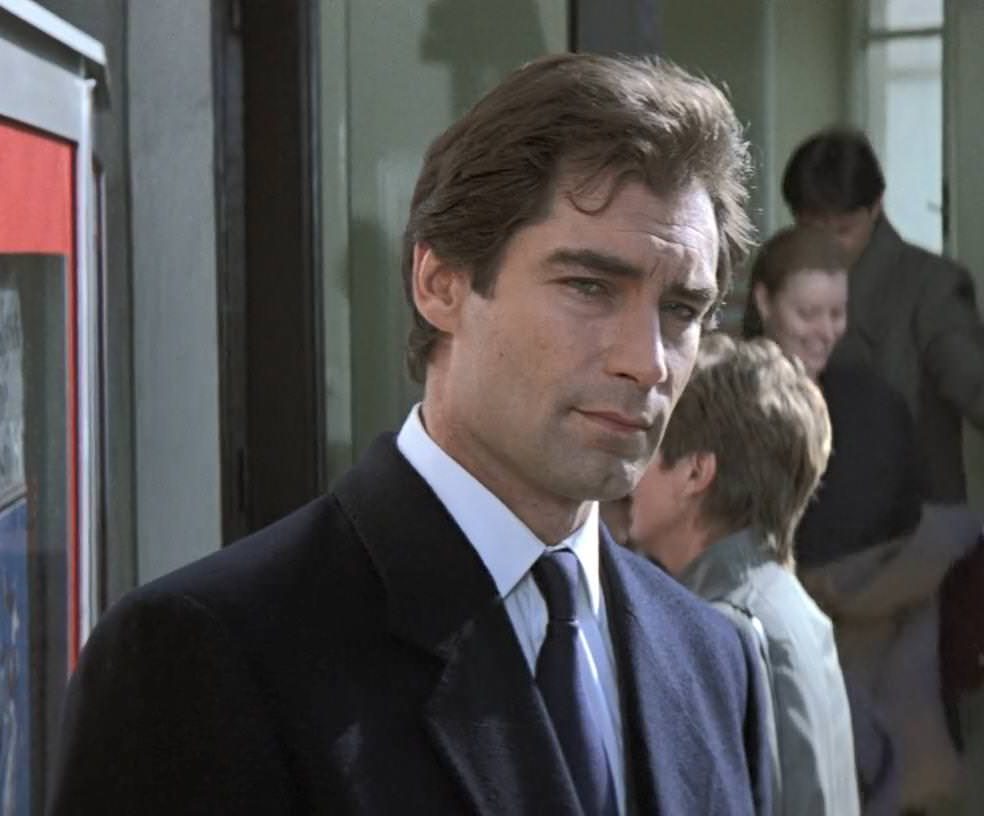
“On those pages I discovered a Bond I’d never seen on the screen, a quite extraordinary man.”
[rtk_adunit_middle]
The actor explained that Fleming’s character was “a man I really wanted to play, a man of contradictions and opposites.”
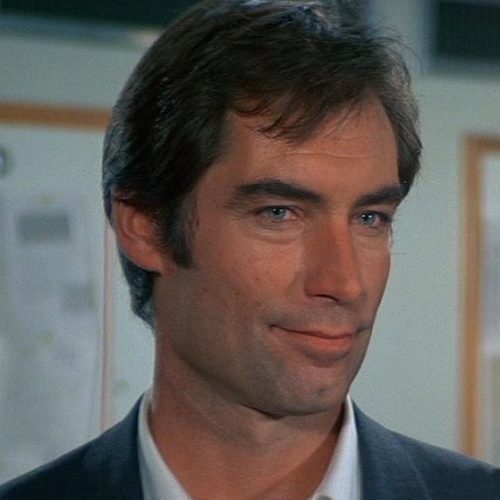
Dalton made a point of drawing his take on the character directly from Fleming, reportedly having the novels on-set for reference.
[rtk_adunit_bottom]
This approach paid off, as many devotees of Fleming’s writing today believe Dalton’s performance is the closest to the character as originally written.
17. He was the closest physical match for Fleming’s Bond
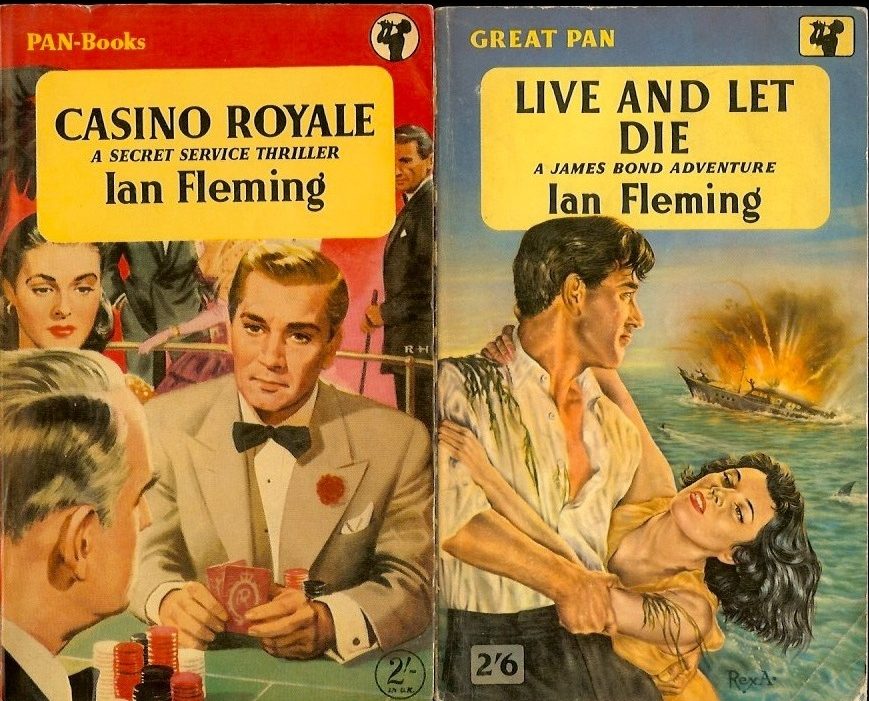
Dalton didn’t just bring a Fleming-esque quality to his Bond personality-wise in his two outings as 007.
[rtk_adunit_top]
The actor also looks the most like the 007 that the author described in the books.

Fleming had singer-songwriter Hoagy Carmichael – pictured above – in mind when he wrote Bond, only with “something a bit cruel in the mouth, and the eyes were cold”.
[rtk_adunit_middle]
According to Fleming, James Bond is six feet tall and has a slim build, grey-blue eyes, and short black hair that leads to a point at the hairline.
At 6′ 2″ with black hair, grey-blue eyes and slim build, Dalton is surely the closest physical match to Bond as described by Fleming.
[rtk_adunit_bottom]
Dalton also arguably has that “cruel mouth” that Fleming imagined, while his resemblance to Carmichael is undeniable.
16. His Bond questions authority and acts on his own judgement
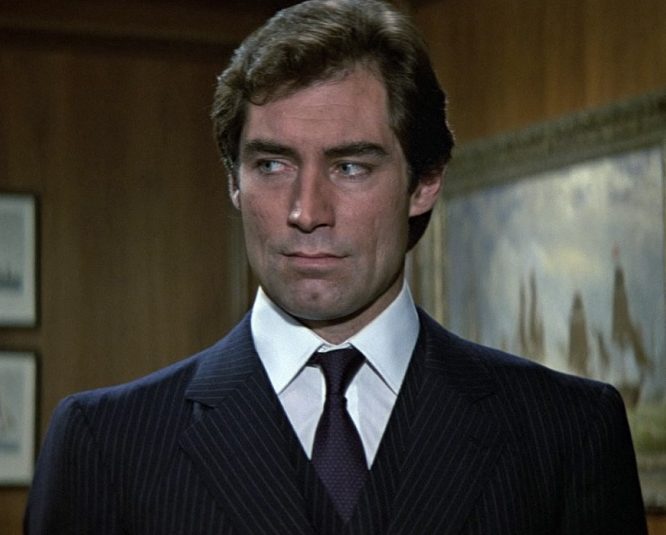
Generations of fans have been drawn to Bond because of the sense of personal freedom the character seems to enjoy, living as he does outside the law and often doing as he pleases.
[rtk_adunit_top]
However, on closer inspection, the 007 of the movies is rarely acting of his own free will. Rather, he is duty-bound to follow his orders from M, and while Bond often bends those rules, he rarely breaks them outright.
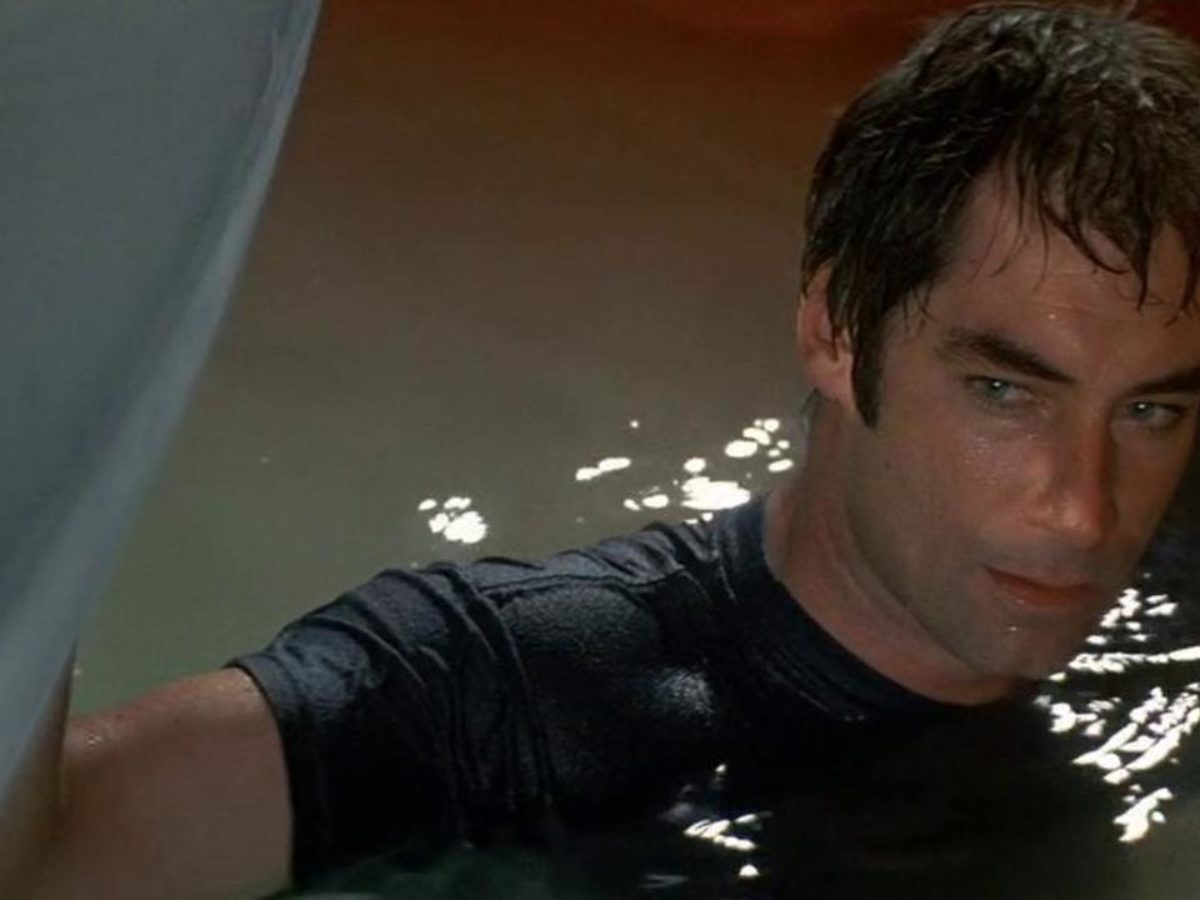
Dalton’s Bond is different from the outset; in The Living Daylights, he refuses to carry out his government orders to take out Maryam D’Abo’s would-be sniper on the grounds that he will only kill professionals.
[rtk_adunit_middle]
Those early scenes see Dalton deliver some of Bond’s best, most unorthodox lines ever: “Stuff my orders! … Tell M what you want. If he fires me, I’ll thank him for it.”
Later, in Dalton’s second film Licence to Kill, Bond is indeed fired by M, and goes rogue.
[rtk_adunit_bottom]
We should mention that George Lazenby’s Bond did this first in On Her Majesty’s Secret Service, but despite this no single Bond actor has been as rebellious as Dalton.
15. His Bond was a more realistic spy
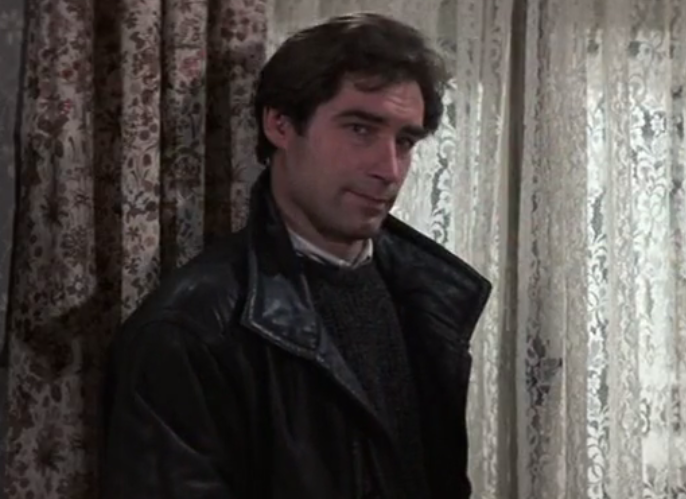
The Bond movies have always presented a glamorous, exciting world of exotic locations, casinos, fast cars, gadgets, guns and beautiful women.
[rtk_adunit_top]
Great entertainment, certainly, but we might well question just how accurate a representation it is of real-life espionage.

By contrast, Dalton’s 007 debut, The Living Daylights, is one of the few Bond movies which feels for the most part like a bona fide Cold War spy thriller.
[rtk_adunit_middle]
The labyrinthine plot, centred on a supposed KGB defection to the West, pours on the political intrigue and subterfuge.
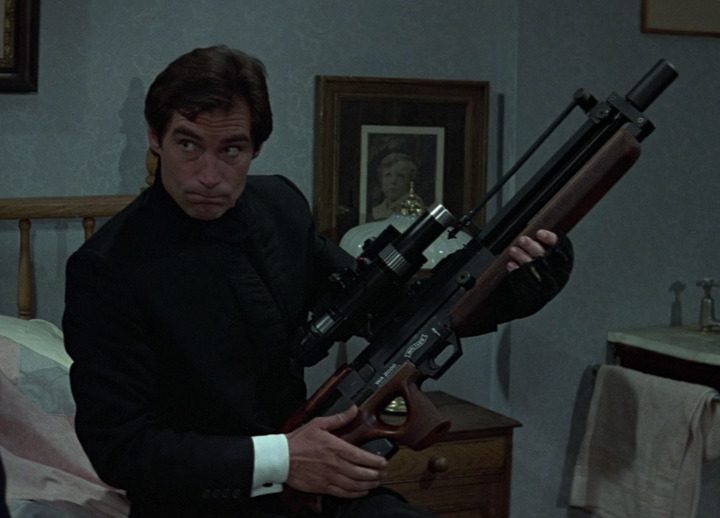
We see Dalton’s Bond doing all the classic spy stuff: surveillance, intelligence gathering, tailing and monitoring.
[rtk_adunit_bottom]
Dalton’s predecessors didn’t do nearly so much of in their time as Bond, too busy drinking booze and wooing women.
14. He did his own stunts
- Credit: Eon Productions/MGM-UA
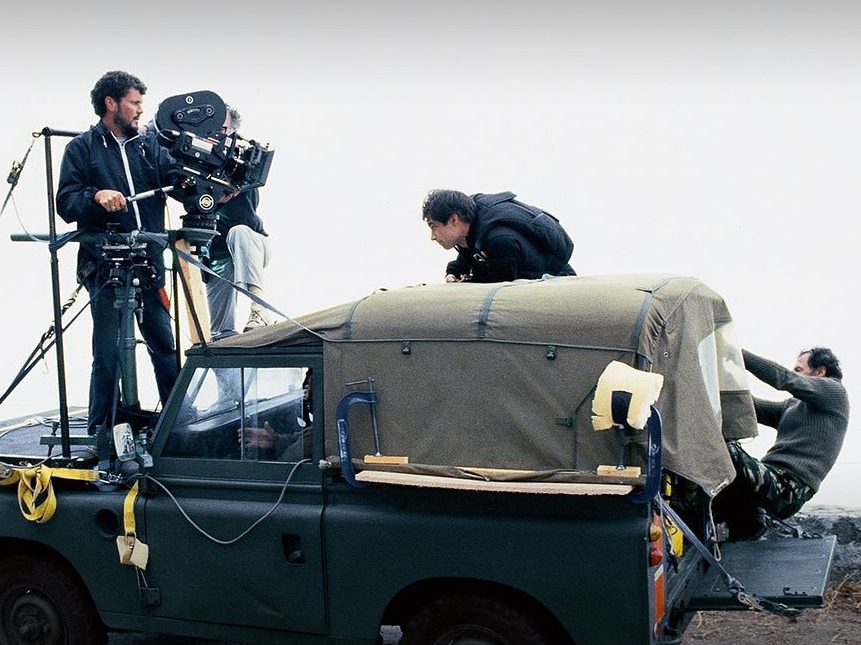
As fun as Roger Moore’s Bond movies may be, it’s never difficult to spot when the cameras cut away from the actor to a stunt double.
[rtk_adunit_top]
As for Moore himself, he rarely appeared physically capable of the feats he was meant to perform, particularly in his later films. (Reminder: Moore made his final Bond film, A View To A Kill, aged 58.)
Not so for the younger and fitter Dalton, who made a point of doing as much of his own stunt work as possible.
[rtk_adunit_middle]
Watch as Bond dangles off the side of a plane, mounts the roof of a moving truck, abseils down a building, is lowered from a helicopter on a winch.
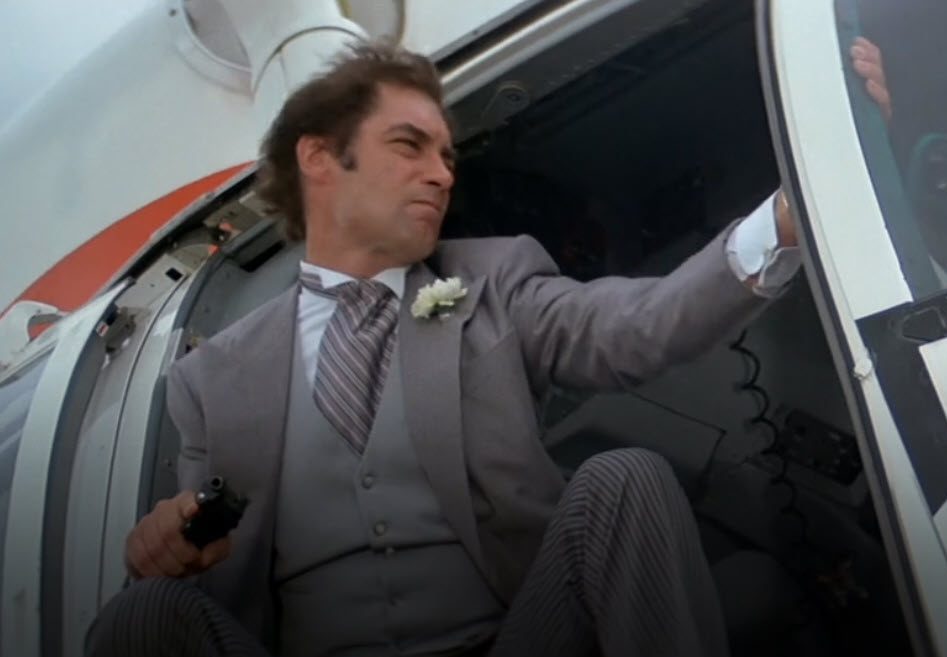
That’s all Timothy Dalton himself, more than holding his own alongside the action stars of the time.
[rtk_adunit_bottom]
And Dalton certainly did stand up to those action stars, as 1987’s The Living Daylights was a bigger box office success than the same year’s Lethal Weapon, Predator and The Running Man.
13. He treats women better than previous incarnations
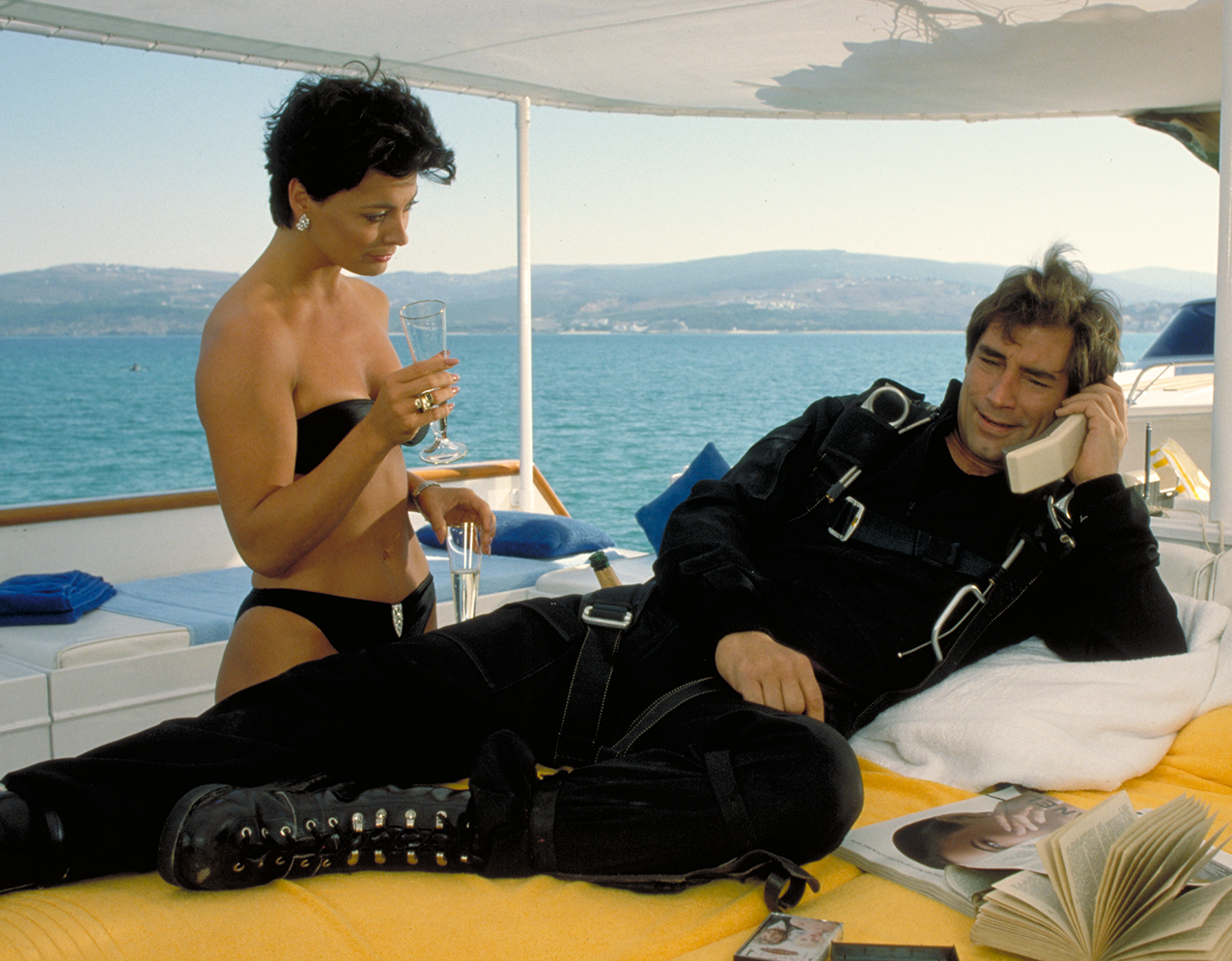
Unlike previous incarnations of Bond, Dalton’s 007 treats women with far greater respect, and (the opening scene of The Living Daylights notwithstanding) doesn’t seem quite so ready to leap straight into bed with anything in a bikini.
[rtk_adunit_top]
Fleming purists might argue this goes a bit against Dalton’s mandate of being true to the character as written.
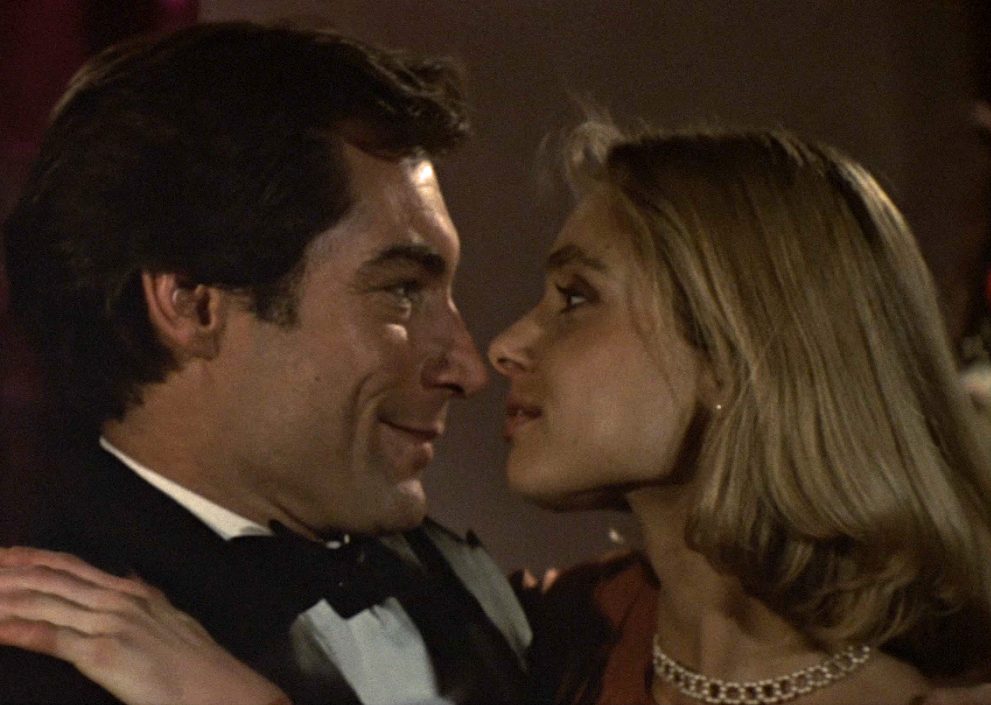
However, for the late 80s audience, it was a refreshing change in tune with the times, both with the rise of political correctness and fears about promiscuity with the rise of HIV/AIDS.
[rtk_adunit_middle]
Bond’s relationship with Kara (Maryam D’Abo) in The Living Daylights sees him almost schoolboyish in his puppy-dog romantic affection for her; it’s a far cry from the leering ways of old.
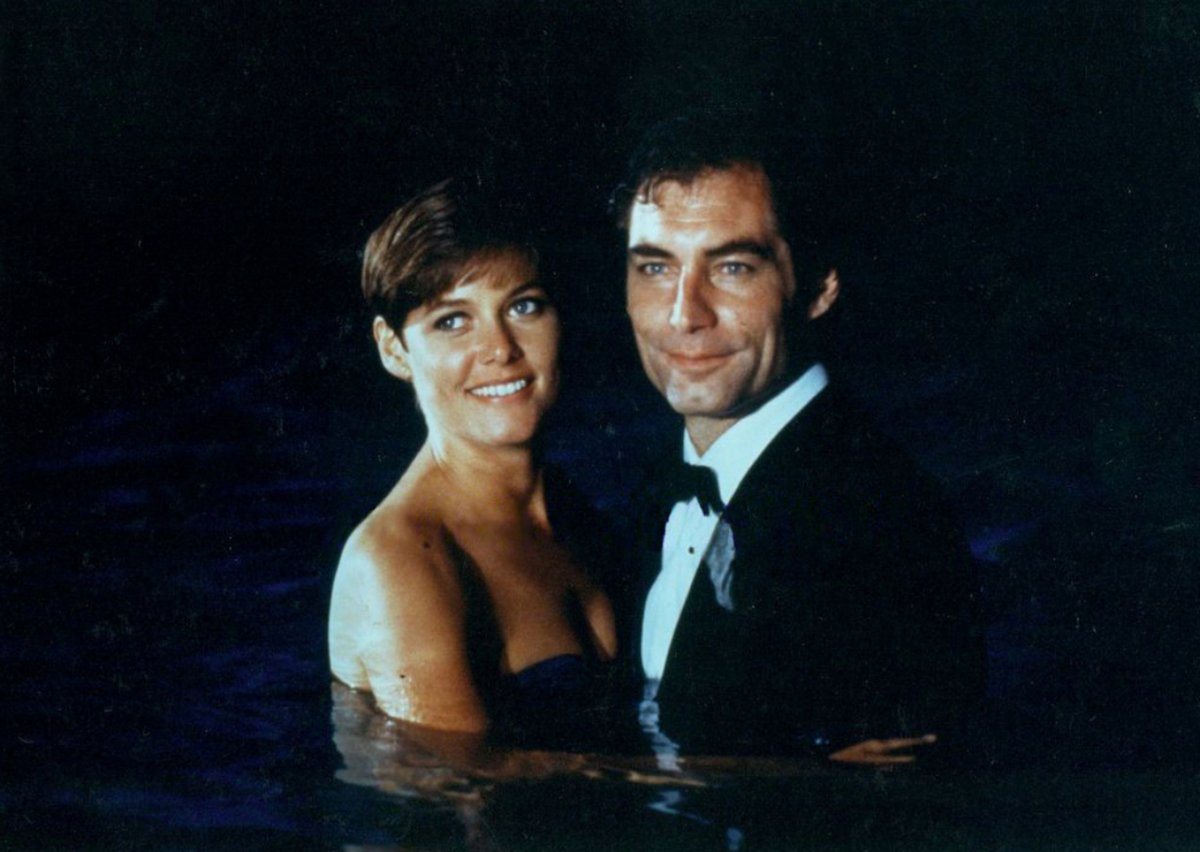
Meanwhile, the interplay between Bond and Pam Bouvier (Carey Lowell) in Licence to Kill is more Moonlighting than Moonraker, with Bond slowly accepting her as an equal, and ultimately finding a connection which, again, feels more romantic than carnal.
[rtk_adunit_bottom]
This is not to say Dalton’s Bond is without his ruthless, sexist moments – witness him tearing the blouse off a KGB general’s mistress in The Living Daylights (although this is done specifically to distract an incoming enemy soldier).
12. He wasn’t afraid to get emotional

Connery’s Bond generally seemed carved out of stone, whilst Moore’s Bond greeted everything with a raised eyebrow and slight smirk.
[rtk_adunit_top]
As such, we barely ever get the sense from these two that the character is emotionally invested in all the bombastic goings-on around him.

By contrast, Dalton’s Bond – while not without his steely reserve, or sense of humour – is a more emotional figure.
[rtk_adunit_middle]
Throughout his two films as 007, we see him display anger, fear, tenderness, even remorse.

All of this serves to make him that bit more human, and not so much of an invulnerable superhero as he often seemed in earlier films.
[rtk_adunit_bottom]
As Dalton argued at the time, “I don’t believe Bond is Superman… He’s got to be a human being. He’s got to be identifiable, and that’s what I’m trying to be.”
11. In the words of Dalton’s Bond director, “you believe he really could kill someone”

As well as ramping up the sense of emotional realism, Dalton also brought some menace and brutality back to Bond.
[rtk_adunit_top]
1989’s Licence To Kill was the first Bond movie to get a PG-13 rating (and a 15 in the UK) thanks to its harder-edged action and increased sense of threat.
This more violent approach may in part have been to keep Bond relevant in the age of Die Hard and Lethal Weapon.
[rtk_adunit_middle]
However, it was also part of Dalton’s mandate of being true to Fleming’s creation, who “lives in a world that is violent and dangerous.”
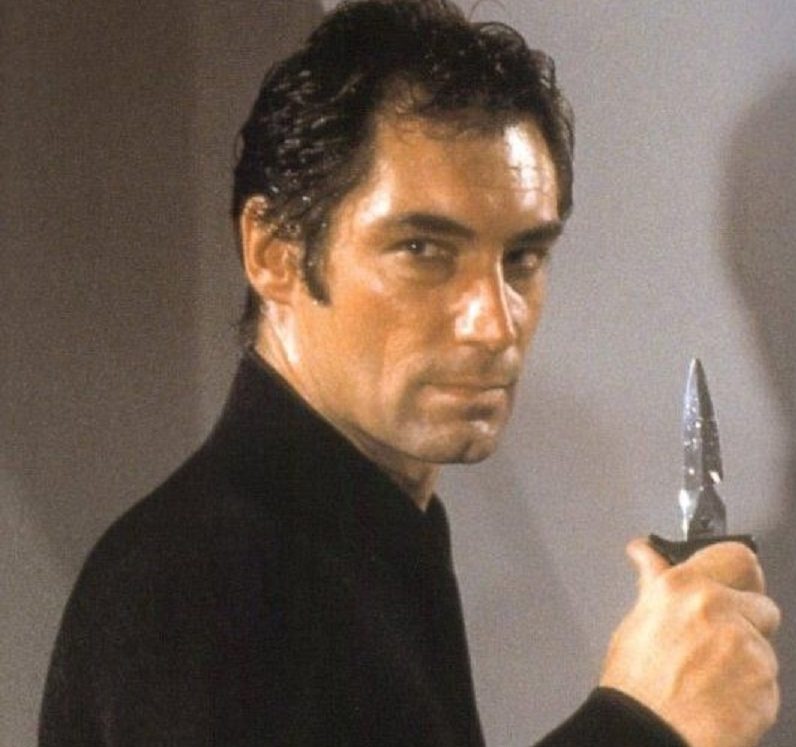
John Glen, who directed both Dalton’s 007 movies, praised the actor as “a very convincing James Bond.”
[rtk_adunit_bottom]
Glen stated, “When he has a gun in his hand, you believe he really could kill someone. I don’t think that was ever the case with Roger Moore.”
10. His Bond brought back the Aston Martin
Of course, Dalton’s 007 wasn’t all about breaking with convention and ignoring previous Bond films completely.
[rtk_adunit_top]
It was during the fourth Bond actor’s tenure in the role that the world’s best secret agent was finally reunited with his signature vehicle: the Aston Martin.

The Living Daylights actually marked the first time Bond had driven an Aston Martin since On Her Majesty’s Secret Service, 18 years earlier.
[rtk_adunit_middle]
That’s right, believe it or not Roger Moore never drove an Aston Martin as Bond (although he did get to drive one in The Cannonball Run).
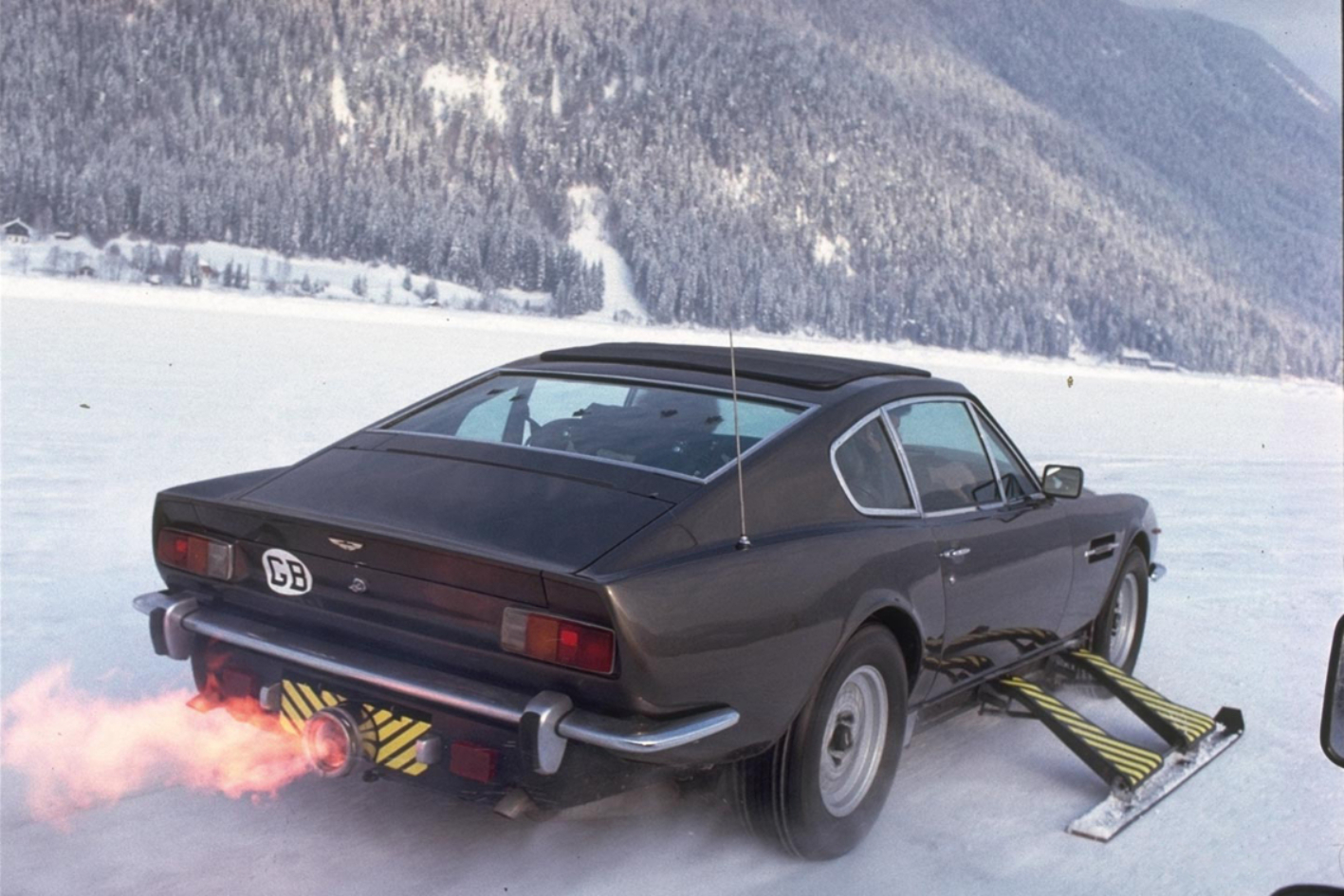
Rather than the classic DB5, Dalton drove an Aston Martin V8 Vantage Volante, tricked out with all the usual Q branch refinements.
[rtk_adunit_bottom]
Controversially, Pierce Brosnan’s Bond drove a BMW in his first two movies, but the Aston Martin has remained Bond’s go-to car since.
9. He brought a father-son dynamic to Bond’s relationship with Q
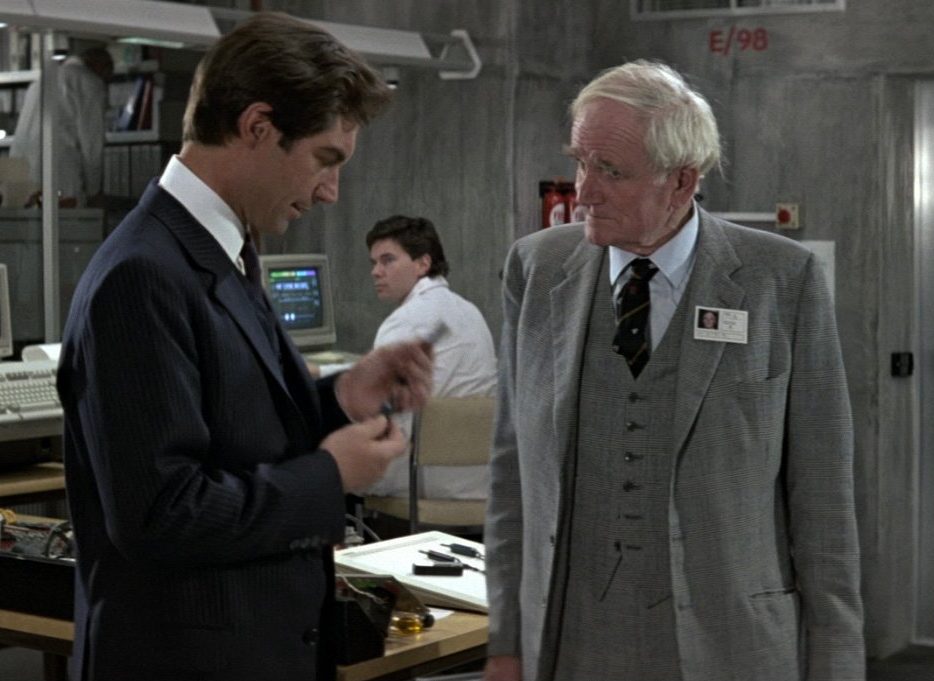
Fun fact: late Q actor Desmond Llewellyn was the single longest-serving actor in the Bond series, with 17 films to his name.
[rtk_adunit_top]
However, it wasn’t until the Dalton era that Q become a far more integral character than he had ever been before.
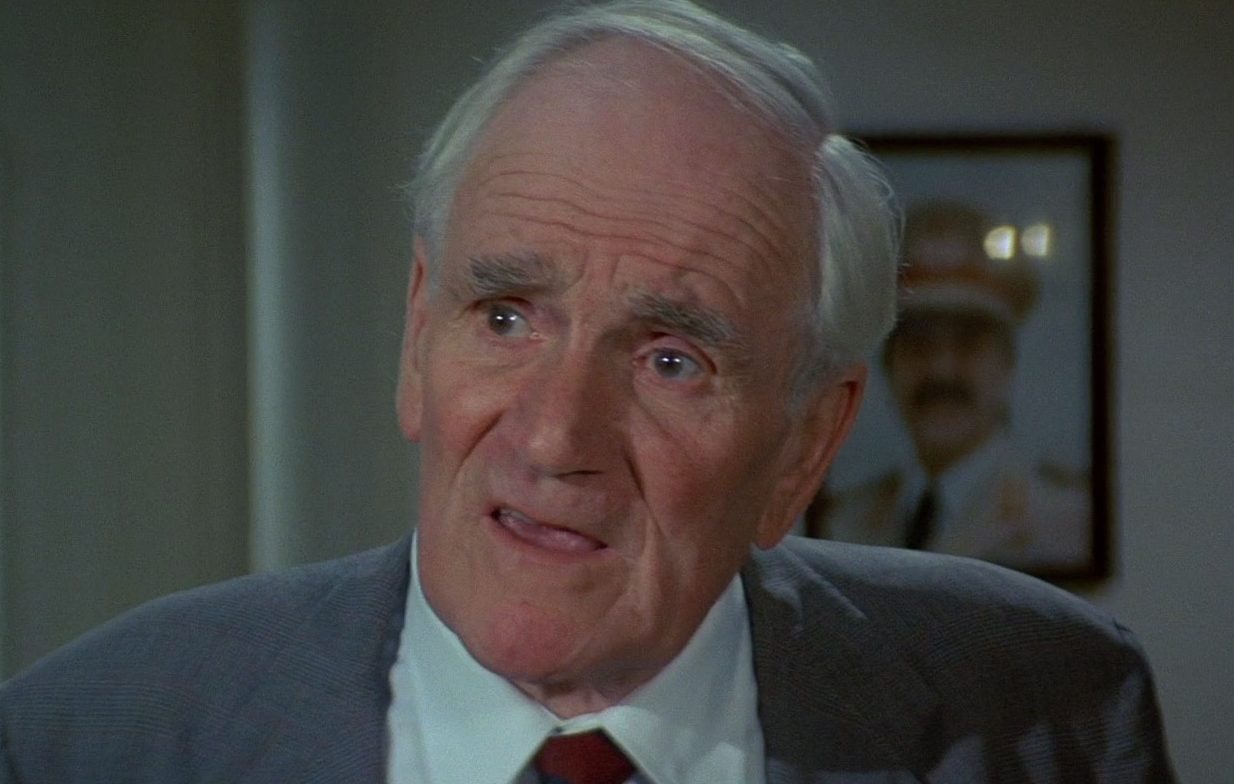
This is particularly true of Licence to Kill, which finds Q not only serving as Bond’s armourer, but as a field agent in his own right.
[rtk_adunit_middle]
Where Llewellyn’s Q had been a peer to previous Bonds, the age gap between Dalton and Llewelyn himself lent a touching father-son quality to their interplay.
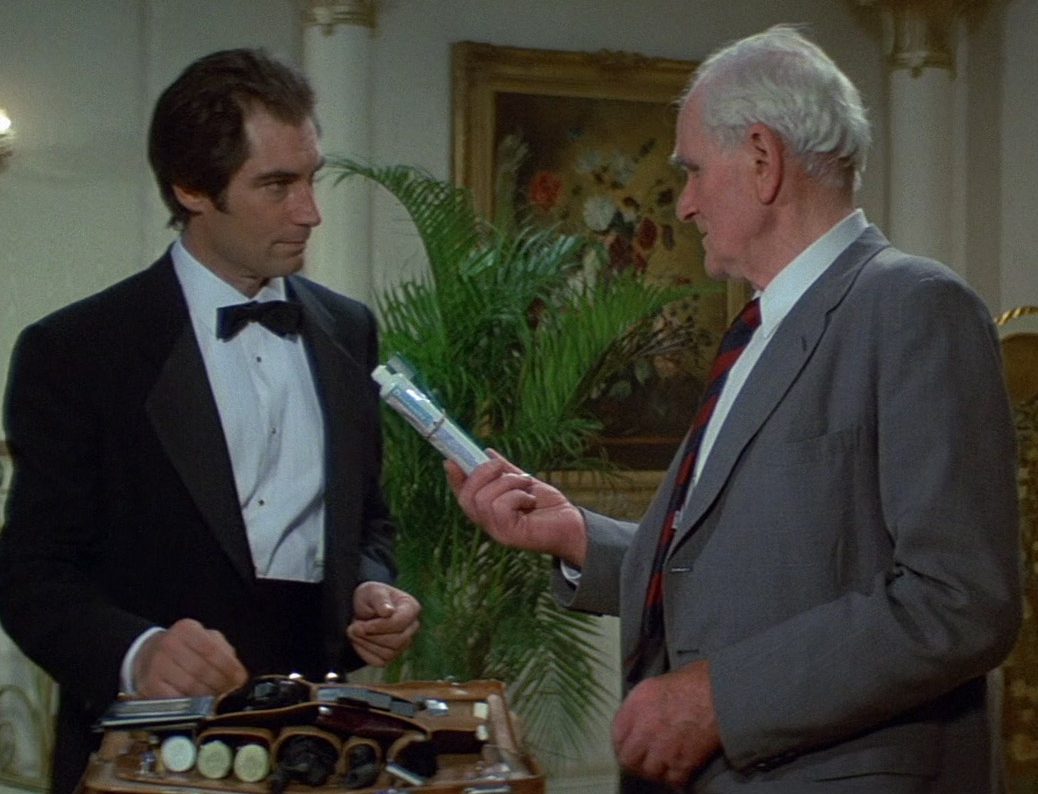
This relationship dynamic would be developed further in Llewellyn’s final three films alongside Pierce Brosnan.
[rtk_adunit_bottom]
Still, it was the Dalton movies that really cemented the fuddy-duddyish, paternal Q persona we know and love today.
8. He was the only Bond who knew how to swear
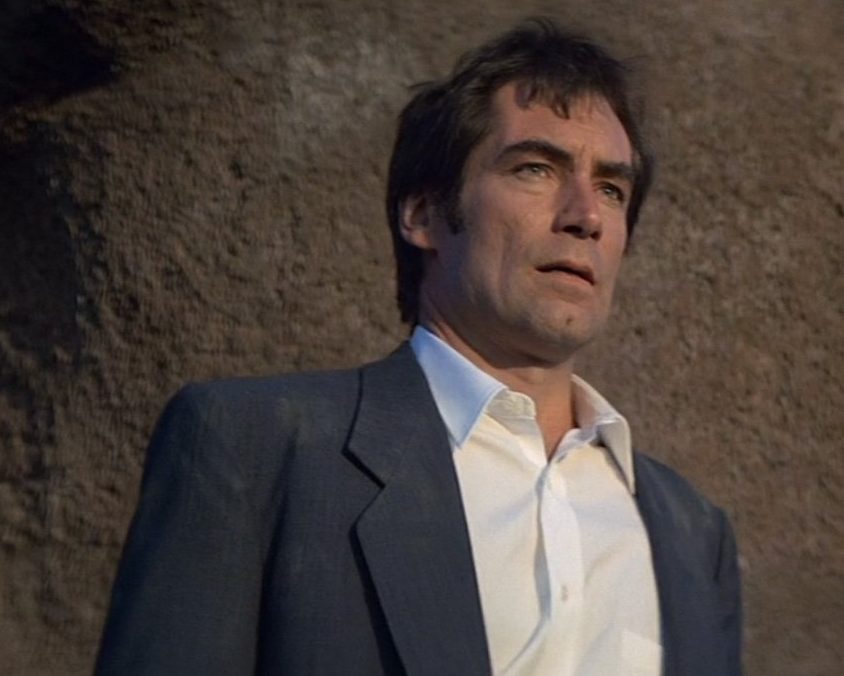
Okay, this might seem a minor point, and some would not unreasonably argue that James Bond really doesn’t need to use curse words.
[rtk_adunit_top]
However, Dalton remains one of the only Bonds to extensively use profanity, most notably in Licence to Kill: a “p**s off,” a “b****rd” and a couple of “bl**dys” as well.
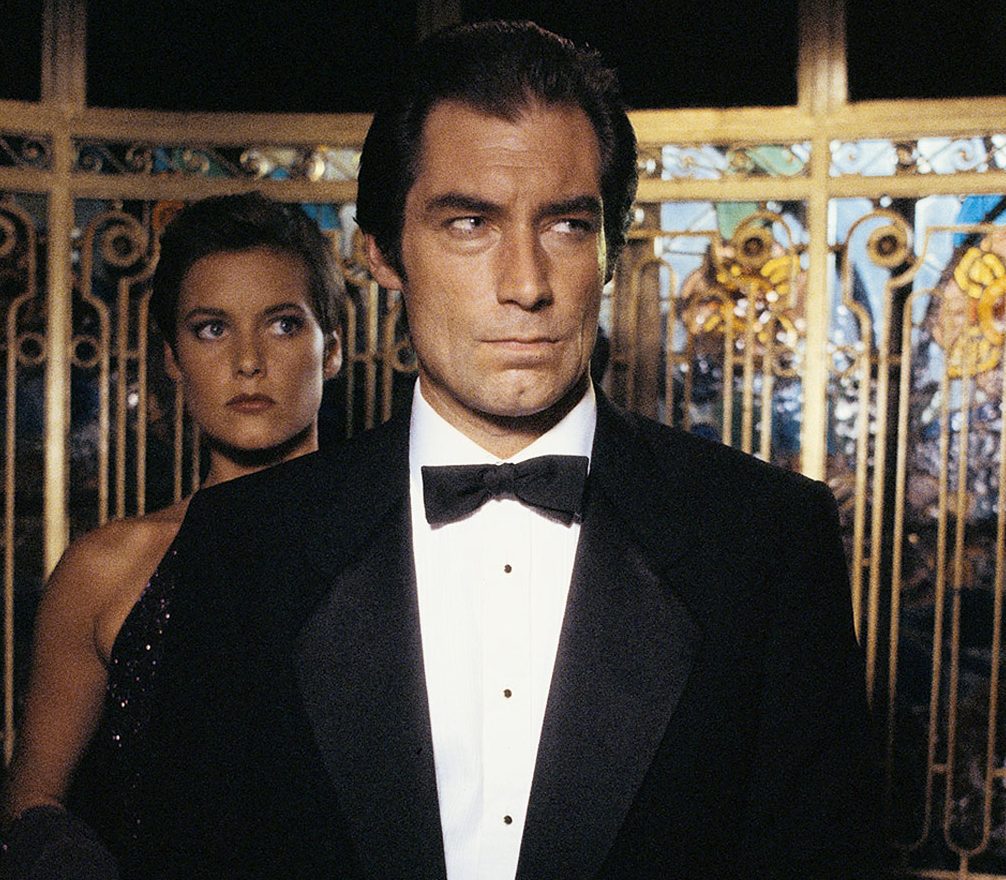
Not that any of this quite measures up to Dalton’s legendary bit of swearing in Flash Gordon: “Freeze, you bl**dy b****rds!”, but for Bond it was still a huge step.
[rtk_adunit_middle]
Before Dalton, Sean Connery’s Bond had cursed a bit, notably calling Tiffany Case a “b**ch” in Diamonds Are Forever.
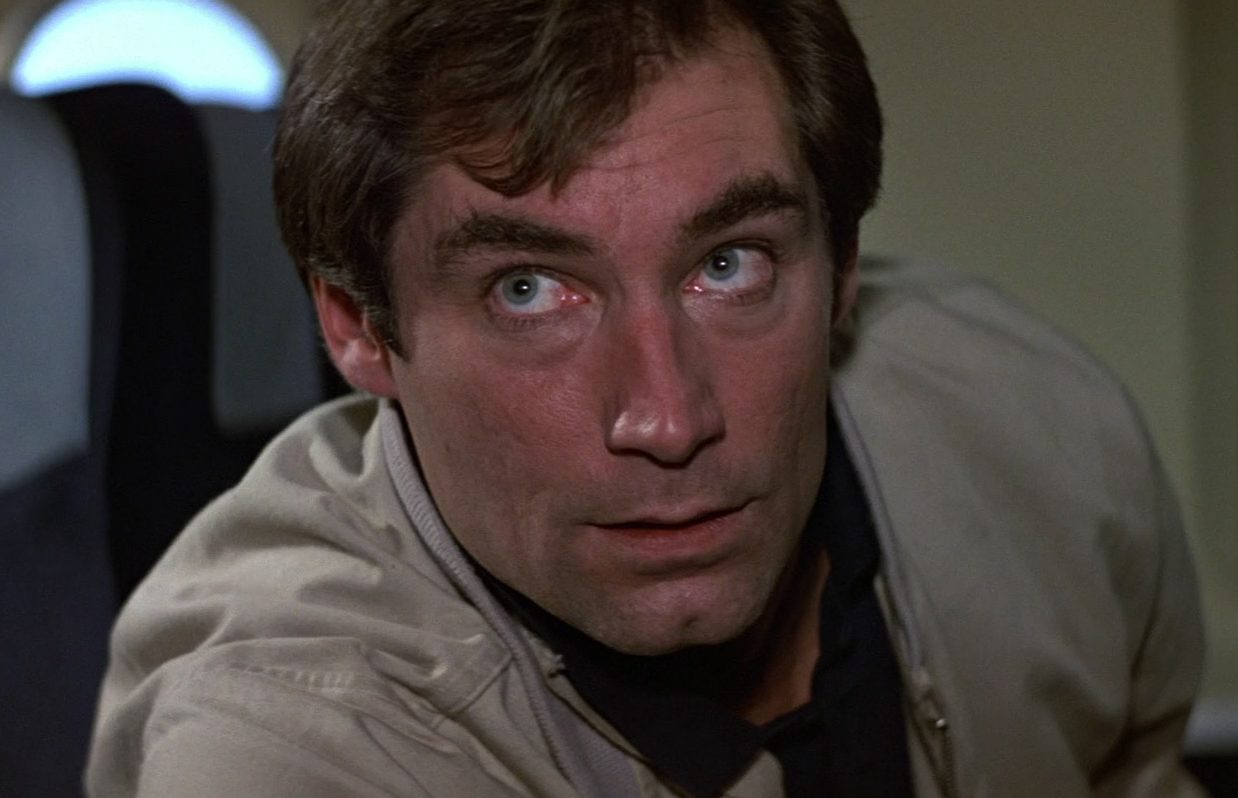
Since then, Daniel Craig has dropped in some “bl**dys,” a couple of “b**ches,” and of course a reference to his balls in the Casino Royale torture scene.
[rtk_adunit_bottom]
Only one actor in a Bond movie to date has dropped the F-bomb: Judi Dench’s M, of all people, in Skyfall. After her, Dalton’s Bond is the best swearer the franchise has ever known.
7. He knew when it was time to quit the role

Before Licence to Kill, the longest 007 fans had ever had to wait for another Bond movie was the three-year gap between The Man with the Golden Gun and The Spy Who Loved Me.
[rtk_adunit_top]
Unfortunately, legal issues at studio MGM-UA stalled the Bond franchise at the start of the 1990s, meaning no work could begin on another movie until 1994.
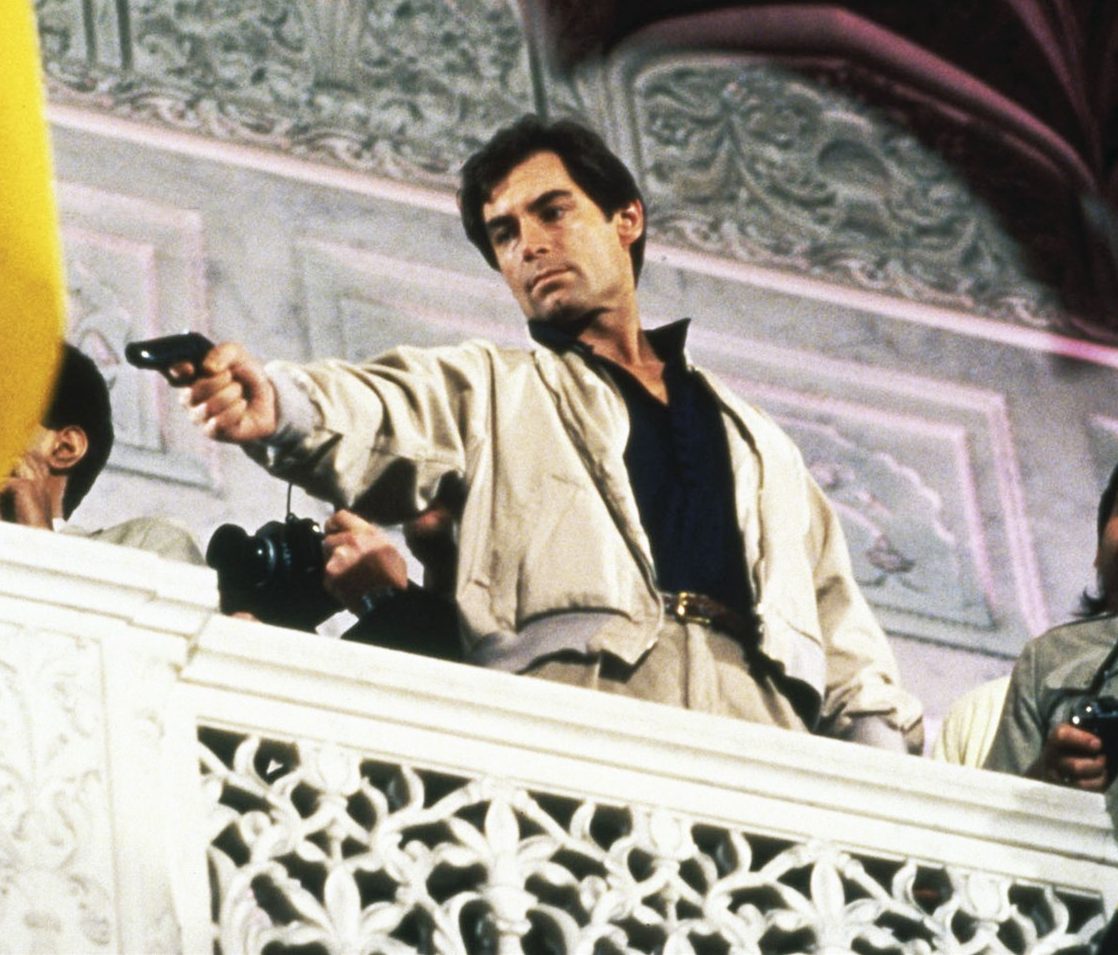
When work finally began on the film that would become GoldenEye, it was still intended to be Dalton’s third, eight years after he was first cast.
[rtk_adunit_middle]
However, the actor could see that the wind was changing and chose to stand down, clearing the way for Pierce Brosnan.
While it’s hard not to wonder what might have been had Dalton continued, it’s also nice that he opted to quit while he was ahead.
[rtk_adunit_bottom]
This makes him one of the few, if not only Bond actors not to outstay his welcome. (We’ll admit, we also wonder how George Lazenby would have fared if he’d stayed on.)
6. He looks more like a real spy than any other Bond actor

Decades of films and TV shows depicting spies as glamorous, ultra-handsome womanisers in sharp suits has obscured the truth.
[rtk_adunit_top]
In reality, spies aren’t all that interesting to look at – and that’s rather important for their line of work.

Real secret agents tend to be average-looking, all the better for them to change character, and to prevent them from standing out and potentially blowing their cover.
[rtk_adunit_middle]
Out of the gallery of actors who have played James Bond to date, Timothy Dalton looks the least like a movie star – and we mean that in the nicest possible way.

Handsome in an everyday way, in short, Dalton looks like the Bond most likely to blend into a crowd – and therefore the most likely to make a half-decent spy in real life.
[rtk_adunit_bottom]
Sean Connery, George Lazenby, Roger Moore, Pierce Brosnan and Daniel Craig, on the other hand? You’d pick them all out of a line-up in a second.
5. He pioneered the understated Bond
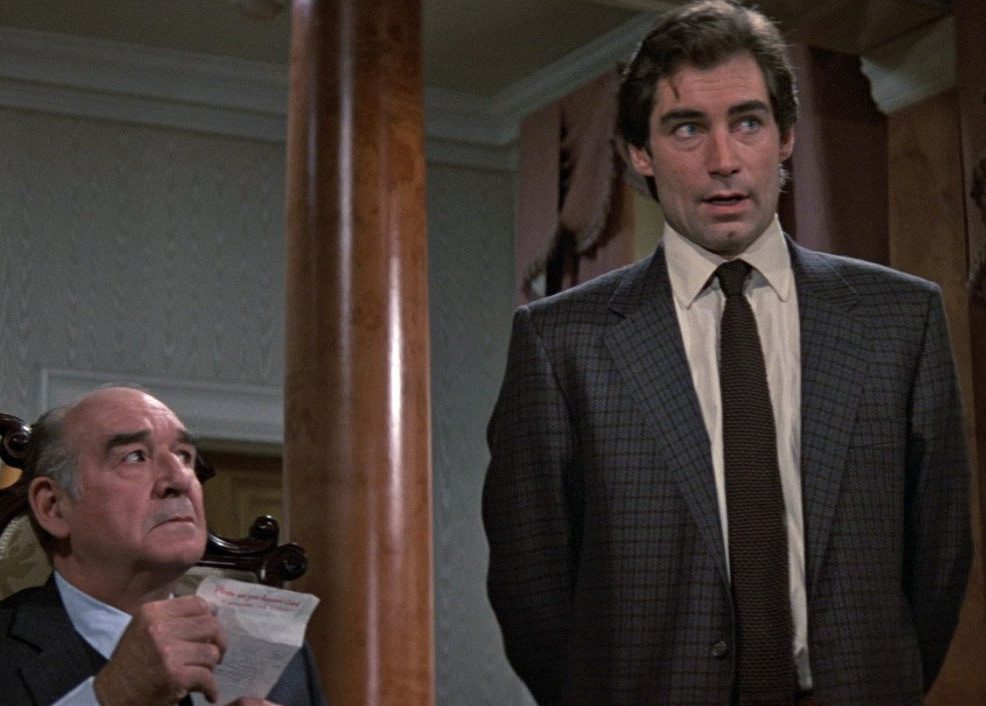
After the series blew up into self-parody in the Brosnan era, Daniel Craig rejuvenated Bond in 2006 by portraying the character like never before – at least if critics are to be believed.
[rtk_adunit_top]
With Casino Royale, his 00-debut, Daniel Craig was credited with bringing a realness to Bond that some argued no actor had previously brought to the role.

Of course, one Bond actor had already approached the character in such a way: and that actor was, of course, Timothy Dalton.
[rtk_adunit_middle]
The fact that Dalton was arguably the most experienced actor to have ever played Bond must have helped his more sophisticated interpretation.

Known through the 60s and 70s for his work on the stage, typically in Shakespeare plays, Dalton brought a gravitas and understatement to 007 that James Bond had never known. Unlike the others, Dalton played Bond small.
[rtk_adunit_bottom]
Saying so much with a mere glance or snarled lip, Dalton’s was the first understated Bond. Daniel Craig’s Bond, great though his interpretation is, is only the second.
4. His Bond ‘quips’ sound more like threats

There’s another quality that Timothy Dalton shares with Daniel Craig in his turn as Bond: the almost total lack of a sense of humour.
[rtk_adunit_top]
This isn’t an insult to Dalton (nor to Craig) – the actor has proved he’s more than capable of doing comedy in the likes of Hot Fuzz and two Toy Story movies.

But Dalton didn’t choose to make his Bond funny; rather, 007 one-liners in Dalton’s interpretation come out sounding positively threatening.
[rtk_adunit_middle]
Take, as just one example, the way Dalton reads the line “He got the boot” after dropping a goon out of a high-flying plane – by cutting the laces on his shoes – in The Living Daylights.

Where Connery or Moore would have made “He got the boot” into a throwaway laugh-line, Dalton’s Bond rather smirks and spits the dialogue with a coldly amused stare. Often, Dalton’s Bond seems less playboy, more sadist, and it’s nowhere more obvious than when he’s quipping.
[rtk_adunit_bottom]
It’s not an approach for everyone – many fans consider Roger Moore’s wise-cracking, tongue-in-cheek Bond to be quintessential. But for our money, this unique approach makes Dalton a more effective quipper than any Bond.
3. He demanded that the villains were more realistic

Timothy Dalton’s demands for playing James Bond didn’t stop at reversing the trend into self-parody. He also wanted a different kind of antagonist.
[rtk_adunit_top]
Prior to the Dalton era, almost every Bond villain had, in some way, attempted to put the world in peril, with each new 00-Moore baddie more moustache-twirlingly evil than the last.
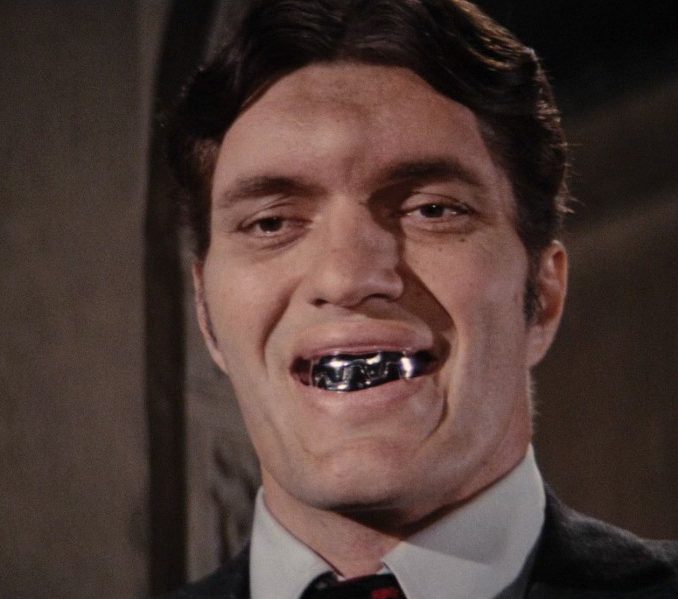
Dalton put a stop to this. In a 1989 interview, Dalton complained that “every film seemed to have a villain who had to rule or destroy the world.”
[rtk_adunit_middle]
It’s thanks to Dalton that Bond villains evolved from Dr Evil-type masterminds with dreams of conquering the world into complicated baddies with smaller-scale aims.
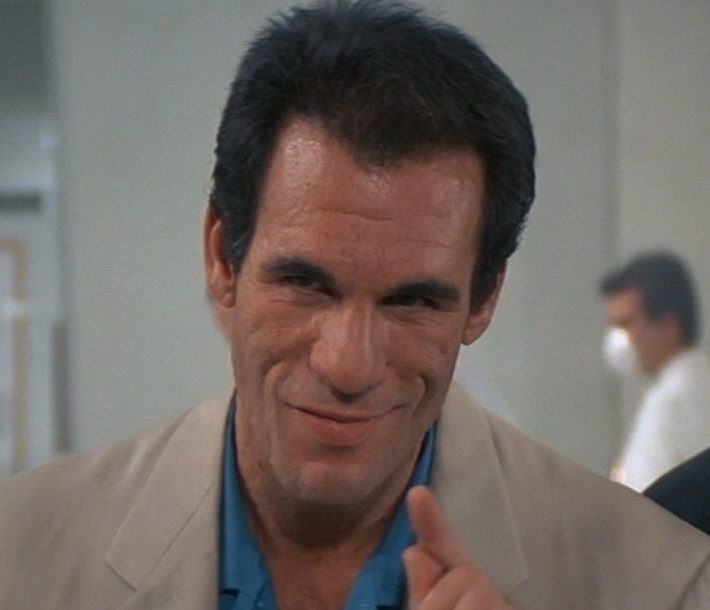
Henceforth, The Living Daylights featured more grounded Cold War-era adversaries in John Rhys-Davis’ Pushkin and Jeroen Krabbé’s Koskov.
[rtk_adunit_bottom]
Licence to Kill also boasted a more realistic villain in Robert Davi’s Scarface-esque drug baron Sanchez.
2. He made two of the most underrated Bond movies

They arguably still don’t get enough of it even today, but Timothy Dalton’s Bond movies certainly never got the love they deserved on release.
[rtk_adunit_top]
It’s no huge surprise. The Living Daylights and Licence to Kill harkened back to a chillier kind of spy thriller, but these Bond movies were unfortunately released in an era where over-the-top Schwarzenegger and Stallone action vehicles reigned supreme.

Looking back, The Living Daylights and Licence to Kill now look like two of the better Bond movies, with Daylights akin to a classic Connery throwback, only with a more complicated 007 in the lead.
[rtk_adunit_middle]
Licence to Kill, meanwhile, is an utterly unique Bond, a revenge flick so savage it puts a bad guy through a cocaine shredder and places a man in a decompression chamber until his head literally explodes.

Licence to Kill was made expressly for adults, which proved controversial at the time – but it ensures there’s no other Bond movie like it.
[rtk_adunit_bottom]
Not every Bond ages well; in fact, many of the films haven’t. Revisit Timothy Dalton’s two Bond movies, however, and you’ll find they hold up as well as any.
1. He inadvertently helped create one of the best Bond movies in GoldenEye
Timothy Dalton might ultimately not have starred in GoldenEye, but the actor left such a lasting impression on the franchise that he arguably elevated Pierce Brosnan’s first Bond movie.
[rtk_adunit_top]
Despite the film’s delay inevitably ageing Dalton out of the lead role, GoldenEye was written with the actor in mind – and this helped to make the film one of the all-time great 007 outings.

GoldenEye is in many ways the ideal Bond movie: more bombastic than The Living Daylights or Licence to Kill, the pyrotechnics and almost operatic themes are balanced out by the realism and grittiness that was Dalton’s legacy.
[rtk_adunit_middle]
See the scenes set in a crumbling post-USSR Russia, and consider the film’s opening sequence, which allows for a grand, Cold War-era setpiece but also underscores the fun with a serious look at how ruthless Bond’s profession is, adding a heft unbeknownst to Brosnan’s other Bond films.
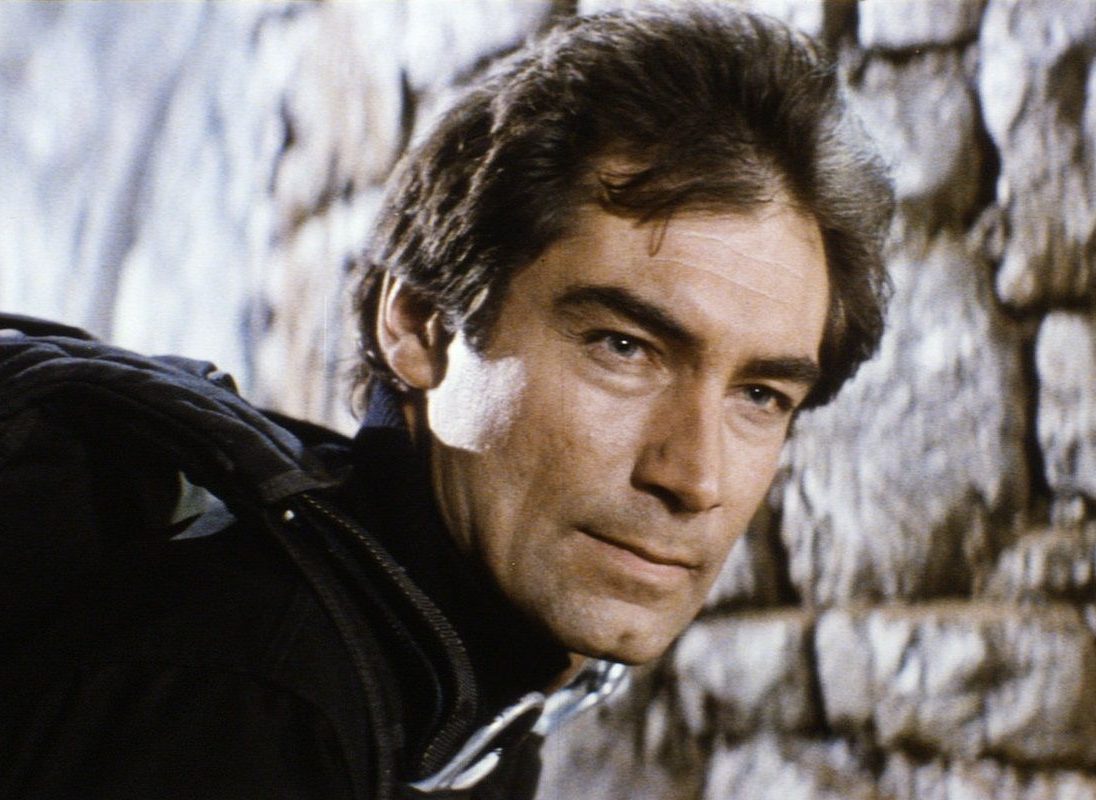
Consider also that this Bond movie is so unusually reflective, with 007 depicted as a dark loner who’s both a man out of time and tragically dangerous to the people he knows – all of this a hangover of the way Dalton played the superspy.
[rtk_adunit_end]

